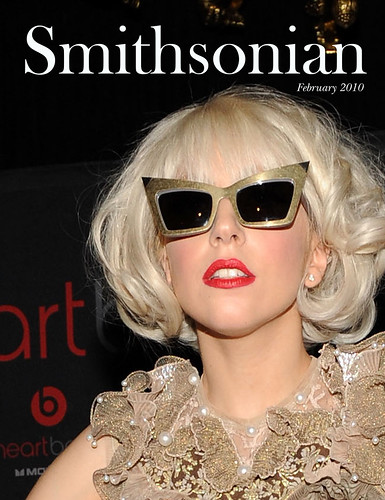
In a historical world, way back in a time before mega-mediastars, the former editor of Life magazine, Ned Thompson, started up a new magazine with S. Dillon Ripley. At the time, Mr. Ripley was Secretary of the Smithsonian Institution. They called it Smithsonian. It would be sold to “members” of the Smithsonian and sell advertising. Their first salesman was Tom Black, also a former Time Inc. ace, son of Howard Black, Time’s first salesman…
Tom Black was Smithsonian magazine’s first Director of Advertising. He joined the magazine in September 1969 and retired in the spring of 1994. During his tenure, the magazine became one of the major success stories in publishing, mushrooming from an initial circulation of 164,000 to over 2 million, making it the leading magazine in the so-called quality field.
From the beginning, the magazine’s readership ranked high in such demographic factors as level of education and disposable income. Black and his sales force, however, had problems at first trying to sell a magazine which many advertisers associated with a musty, dusty museum complex in Washington, D.C. Just when sales were at their lowest ebb, in the slimmer of 1971, sales turned the corner and took off.
Black’s father, Howard Black, was Time magazine’s first ad salesman, and Tom grew up with Henry Luce, the father of modern magazine publishing, as a frequent guest in his parents’ home. After serving in World War II, Tom Black joined J. Walter Thompson, then the world’s leading advertising agency, as a trainee but soon decided that he was more interested in being a part of a new and growing enterprise. He joined the fledgling sales force of ABC Television and wrote the network’s first rate card. After a short stint with The March of Time newsreel operation, he found himself on the sales force of Life magazine, where he spent most of the 1950s, switching over to Time for much of the 1960s.
In 1969, at the age of 45, Black was looking for a new challenge when he was contacted by former Life editor Edward Thompson, who was starting a new magazine for the Smithsonian Institution. As Black modestly recalls it, Thompson probably remembered a favor Howard Black had done years before for Thompson and his son in making Tom Black Smithsonian’s first ad director.
As the magazine’s circulation rose rapidly, so did their ad revenue, peaking at over 1,000 pages in the early 90’s. They were successful in ad sales for many reasons. A quality editorial product attracted boatloads of devoted readers. Their national sales rep network was outstanding and the ad sales staff in New York included many former Time Inc. stars. With retirement benefits provided by TIAA-CREF, it was an attractive option for those who made a killing at Time in the 60’s and 70’s to join Smithsonian and rollover their nest eggs. In the ’60s, you only had to answer the phone at Time and you sold a few pages.
When I worked for Smithsonian, we’d joke about how former Time Inc. people we had, calling it a “Time Inc retiree halfway house.” The success, however, was no joke. Circulation rate base peaked at 2,100,000, and it was sold against both the luxury/high-brow titles (The New Yorker, Gourmet, Condé Nast Traveler) and the weeklies (Time, Newsweek, Business Week). It’s natural competitor was National Geographic, which was written for a 7th grade reading level.
The business side of Smithsonian got reorganized in 1997-8 (that’s why I’m here), and the ad sales equation never recovered. All the stars moved on. Ten years later, Smithsonian ad space is now being sold by Time Inc.
“We are pleased to join with Time Inc. in this endeavor, as both Smithsonian and Time publish truly iconic, legendary brands,” said Smithsonian Enterprises president Tom Ott in a statement. “I’m confident that advertisers will be receptive to this new opportunity.”
Folio: picked it up first. See if you can read into it like I can…
“The opportunity is strictly an advertising partnership,” Leslie Picard, president of Time Inc. corporate sales and marketing told FOLIO:. “We felt it was a great opportunity to develop multiple programs with Smithsonian as part of what Time Inc. can bring to the table. The brands marry up well for a number of our advertisers.”
The partnership is not meant to replace the Smithsonian sales operation, but the publisher will benefit from Time Inc.’s entre into the bigger corporate deals. Picard said the travel, pharmaceutical and technology categories are particularly well-suited for a Smithsonian-enhanced sale.
Smithsonian, which has a rate base of 2 million, dropped 26 percent in ad pages in 2009 versus 2008, per PIB.
Nevertheless, the brand’s reach was an attractive match, said Rosie Walker, associate publisher of marketing and sales development at Smithsonian. “On the flip side, we fill an important demographic for them, we have a readersihp of nearly seven million, which is a nice size to hit that baby boomer demographic,” she said.
Ad revenue is down across the board. I hope this deal helps ups the ad page count for a still-great magazine, Smithsonian.